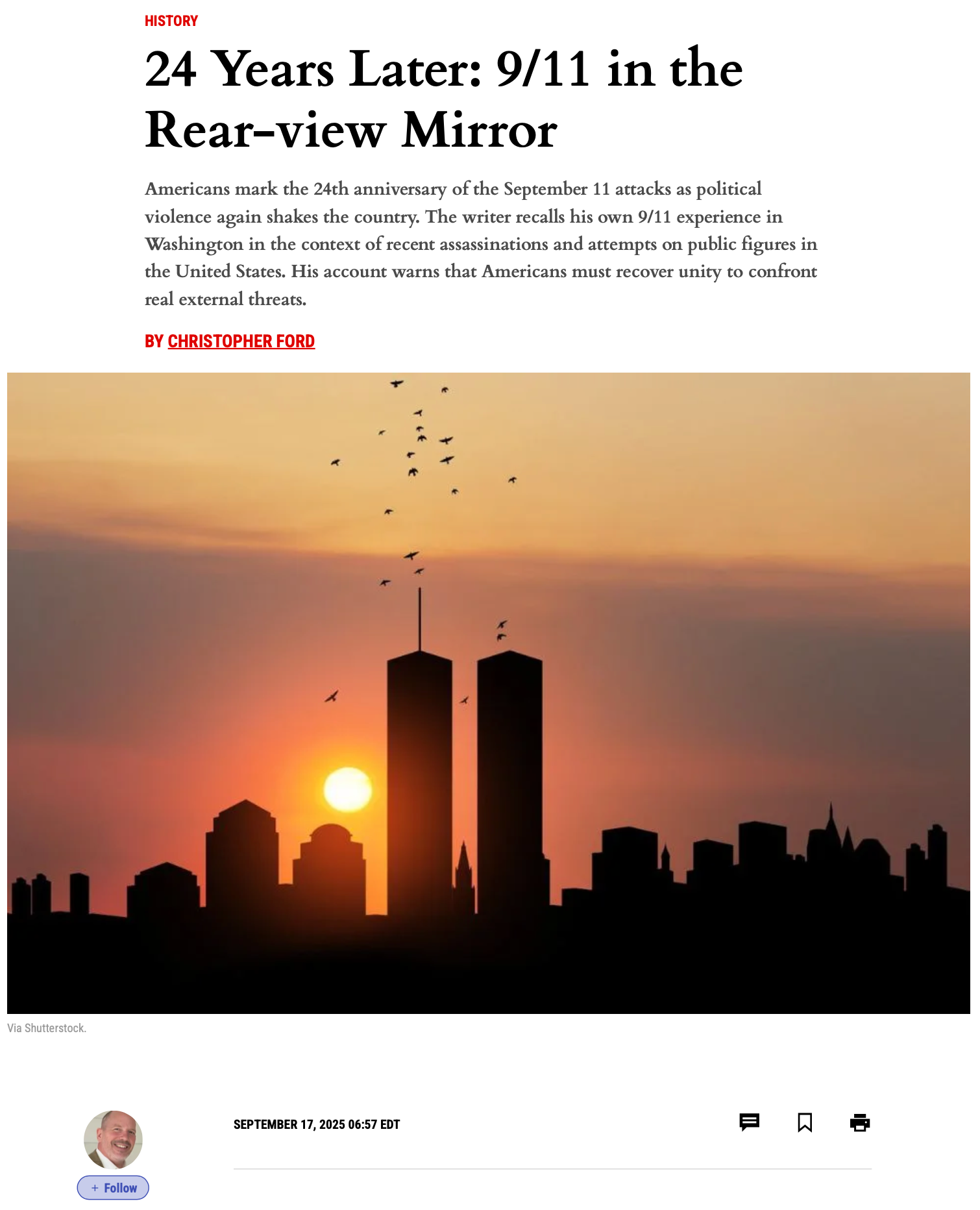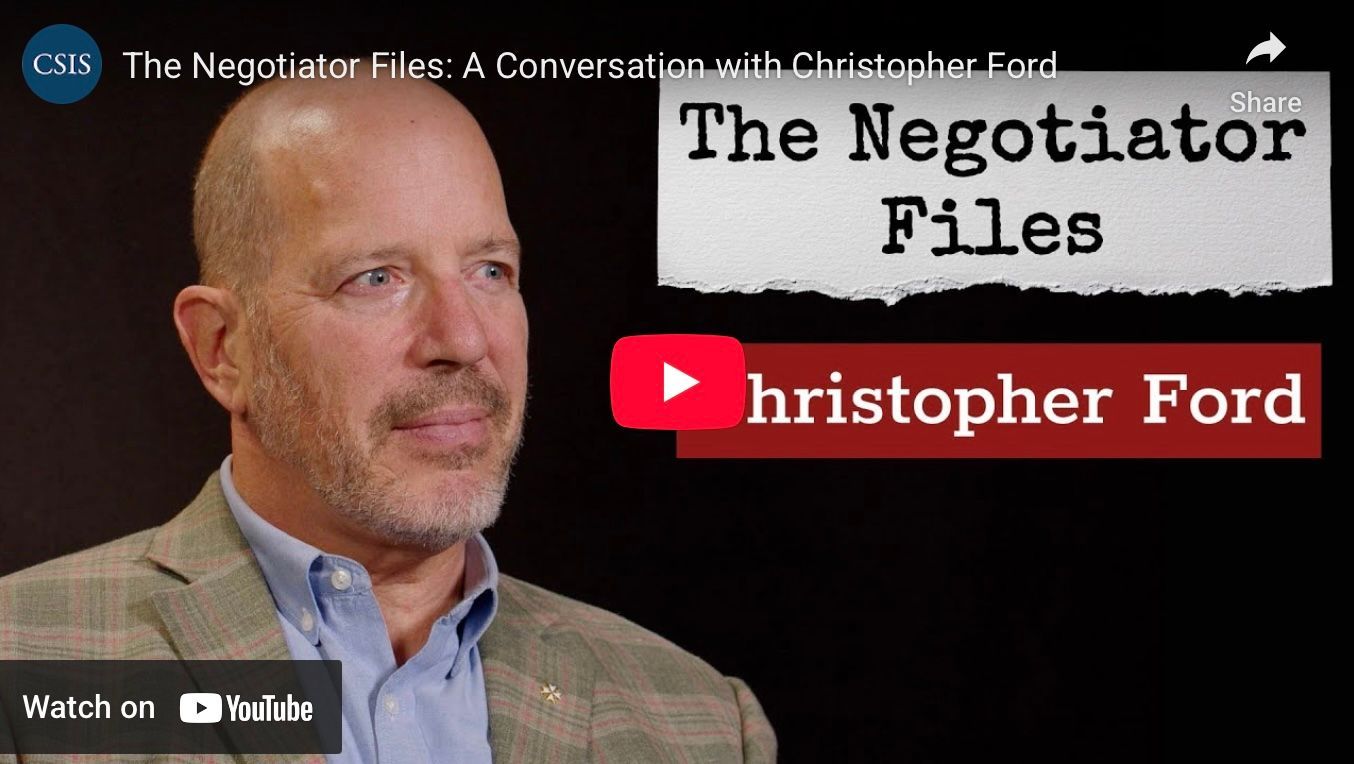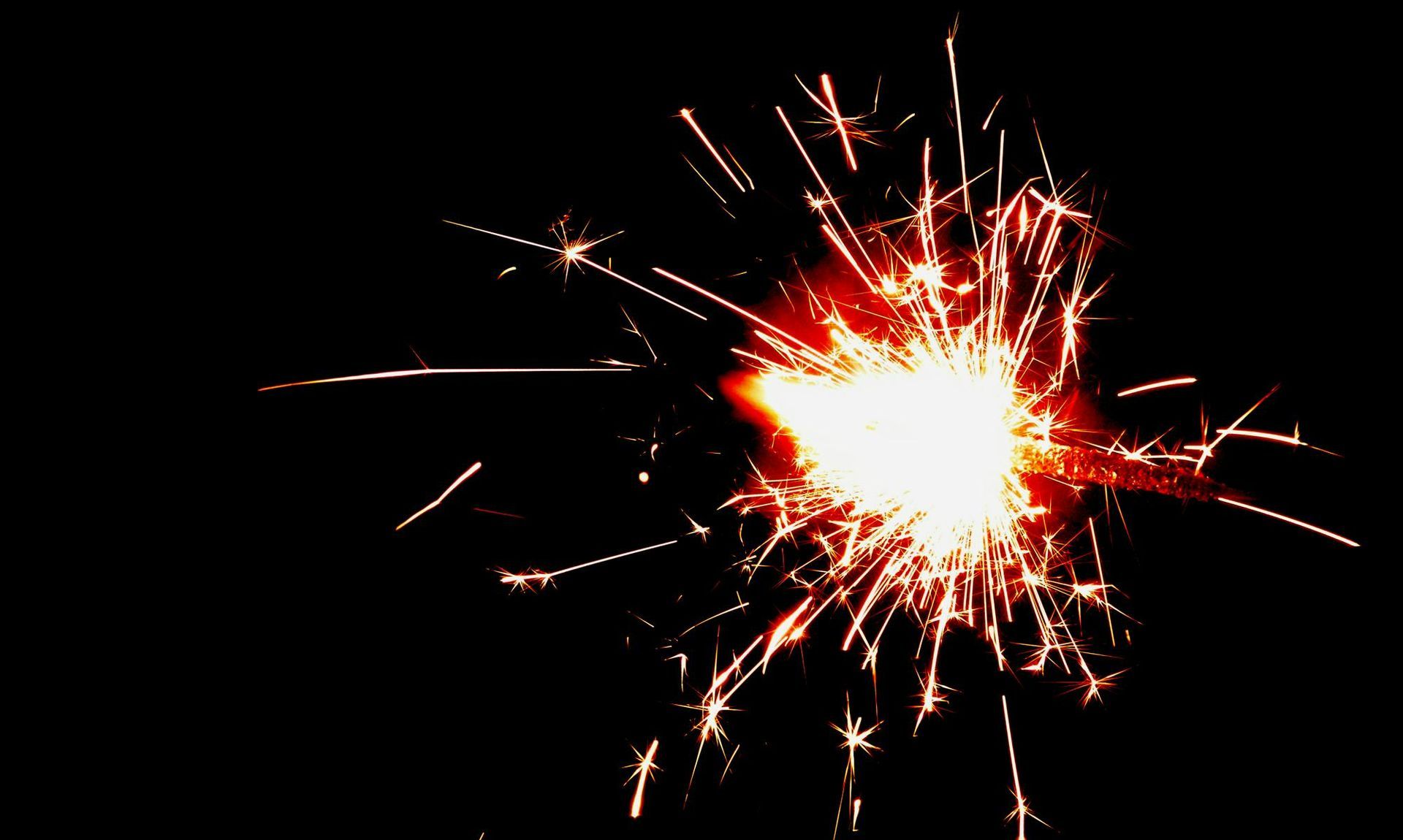New Old Wisdom on a Nuclear Deal with Iran
Below are the remarks Dr. Ford delivered at a workshop on the nuclear future of the Middle East which was held at the Lawrence Livermore National Laboratory on May 21-22, 2024.
Good morning, everyone, and thanks Livermore for having me here. It’s always a pleasure to be out here at the lab, and the Center for Global Security Research has picked an important and – alas! – all too timely topic in holding this conference.
In any discussion of the role and future of nuclear weapons in the Middle East, of course, the proverbial elephant in the room is Iran and its growing nuclear program. And Iran’s nuclear program is indeed what I’d like to discuss today as we talk about how it might be possible to stabilize and strengthen what existing order there remains in the region.
I’d like to discuss Iran not because so many of you didn’t already say such insightful and compelling things about the Iranian nuclear weapons challenge yesterday – for you did – but rather because there’s at least one wrinkle that we haven’t yet discussed.
It’s that wrinkle I’d like to flag this morning, because before too long an important window of opportunity will close for at least potential progress.
As always, I should make clear that these remarks are just my own personal views, and don’t necessarily represent those of anyone else, but I’d like to walk you through that window of opportunity, for I’d love to elicit your thoughts on how we can best take advantage of it.
Except in expert gatherings like this – of which this is actually the second I’ve attended in the last month or so, after not myself grappling with the topic since I left government – it’s ironic that one hears so little about the Iranian nuclear problem today in U.S. public discourse, given the Biden Administration’s eagerness to restart negotiations with Iran and expiate the Trump Administration’s mortal sin of withdrawing the United States from President Obama’s 2015 Joint Comprehensive Plan of Action (JCPOA) nuclear deal with that country.
Today, by contrast, there’s lots of news about Iranian President Raisi’s death, Tehran’s direct drone and missile attacks against Israel, and the mischief Iranian proxies or agents are causing pretty much everywhere. But the only news in Washington about Iranian nuclear issues for some time now seems simply to be that the Biden Administration Iran envoy who was supposed to ride to the rescue here is apparently under investigation for mishandling classified information in ways that allowed a hostile foreign power to obtain it.
Yet as all of you know, and as we’ve already discussed quite a bit, Iran continues to expand its nuclear capabilities in truly alarming ways, making it today truly a “virtual” or “threshold” nuclear weapon state, able to sprint to weaponization quite rapidly more or less whenever it wishes to do so. And no one in this audience needs me to tell them how destabilizing that would be.
But let me focus on the window of opportunity that I think still exists – small though it may be – to at least try to address this problem diplomatically. And in this respect, let me emphasize that we are entering an absolutely critical year, and indeed perhaps the critical year in diplomatic terms.
I’m not talking about the U.S. elections, but rather about the fact that United Nations Security Council Resolution (UNSCR) 2231 will expire in October of 2025. At least one of you mentioned that yesterday, but let me add an additional gloss. When UNSCR 2231 goes away, so also does its associated U.N. sanctions “snapback” mechanism for imposing global, legally-binding sanctions on Iran. That point is now less than a year and a half away.
Once UNSCR 2231 expires, the only way to place further U.N. sanctions pressures on Iran to restrain or punish its behavior would be through an entirely new Security Council vote – passage of which would all but inevitably be vetoed by the now essentially pro-proliferation revisionist regimes of Russia and China. That means Iran has only to wait a bit longer until it is given a sort of “get out of jail free card” from the United Nations, pretty much no matter what it does in building up its nuclear program.
That’s naturally a terrifying thought. Nonetheless, this impending October 2025 deadline also means that the proliferation-responsible countries of the world still have at least a little time left in which finally to do the right thing in trying to meet the Iranian challenge.
It’s worth reemphasizing just how critical this window of time is.
You need to remember that it was always structurally baked into JCPOA that we would reach a point at which Iran was free of any restriction on its ability to build up fissile material production and enrich as much uranium as it liked. The key so-called “sunset” provisions of the JCPOA begin to expire on their own terms in 2025, and most of them are to disappear by 2030 – after which Iran would be able, in complete conformity with the JCPOA, to employ as many sophisticated centrifuges at it desired, to enrich uranium to whatever level it wanted, and to hold as large a stockpile of enriched uranium it wished.
This “sunsetting” of nuclear restrictions is often forgotten what little there now is of our lamentably partisan public discussion of JCPOA issues, but it bears emphasis here: the JCPOA itself condoned the eventual emergence of such a destabilizing Iranian “virtual” weapon state. To be sure, the U.S. withdrawal from the deal in 2018 has forced us to deal with this unhappy situation rather sooner than would have been the case had the JCPOA remained in force. But make no mistake: sooner or later, we were inevitably going to confront the kind of nuclear Iran that we face today. The question was whether we would face it within the constraints imposed by the JCPOA or outside that deal.
But that’s why the window of opportunity presented by the next 17 months before the October 2025 expiration of “snapback” sanctions is so important.
The crucial issue here is one aspects of which I have discussed before when I was still in government, and it is one of strategic timing. Had the United States stuck with the JCPOA and Iran complied with its terms, we would still eventually have faced an Iran with a large and growing stockpile of ever-more-enriched uranium, just as we do now. But if everyone had stuck with the deal, this problem would have occurred only after the option of U.N. sanctions “snapback” had disappeared – ten years afterward, in fact.
If everyone still adhered to the JCPOA, moreover, by the very terms of that deal, we and the Europeans alsowould have foresworn the imposition of new national sanctions in Iran for building up its fissile material capabilities. (After all, it would be a violation of the JCPOA to sanction Iran for doing what the JCPOA permitted it to do!) In sticking with the JCPOA and confronting the rapidly expanding Iranian nuclear program of 2035, in other words, we would still face a dangerous Iranian “virtual nuclear weapons state,” but we would have deprived ourselves of the ability to use economic pressures to restrain Iran’s nuclear behavior.
I’m hardly delighted that we face an Iran with an expanding nuclear program today, but since this is 2024 and not 2035, the responsible countries of the world still have options – and better options than we would have had if the United States had not pulled out and it were today 2035. Specifically, the international community still has 17 months in which to use the threat of U.N. sanctions “snapback” to impose a new set of enduringlimitations on Iran’s nuclear capabilities and work to rein in its other destabilizing behaviors.
And if Iran refuses to accept such limits, there still remains time – until October 2025, that is – in which the Europeans could trigger “snapback” to punish Tehran and to cut back the resources it would thereafter have available to support its nuclear program, missile development, and sponsorship of terrorism and proxy militias in the Middle East and farther afield.
With snapback invoked, of course, nothing would preclude giving U.N. sanctions relief to Iran if it finally agreed to enduring limits, but this relief would have to be bargained for and win support of the Security Council. That is, such future relief would need to be earned on the merits of a new agreement, quite the opposite of the indefinite “get out of jail free card” that UNSCR 2231’s expiration and the prospects of Russian and Chinese vetoes would give to Tehran.
The United States, of course, already tried to invoke snapback during the Trump Administration, but the Europeans and almost everyone else rejected the idea, telling us that America’s withdrawal from the JCPOA disqualified us from being able to invoke express language in UNSCR 2231 giving the specified five original JCPOA partners the right to do this. I think we had the stronger legal position, but nobody cared. But none of those irksome debates would prevent the “EU-3” (Britain, France, and Germany) from invoking snapback against Iran’s large and growing nuclear program now.
This is an opportunity that would not exist had the United States stuck with the JCPOA, and it’s one that the international community can still seize in trying to bring the Iranian situation back under control. President Biden now says what we said during the Trump Administration: that what is needed is a deal with Iran that is stronger and lasts longer than the JCPOA. Well, there’s a big tool called “snapback” lying on the ground in front of us waiting for us to pick it up, and it’s a tool designed precisely to impose pressure on Iran to bring its nuclear program back under control. It’s now up to the Europeans to use it, or to squander the opportunity.
To me, there’s an enormous irony here, because imposing new and more enduring limits on Iran is preciselywhat we attempted back in late 2017 and early 2018, before the United States withdrew from the JCPOA. When I was at the National Security Council staff and then in my first months at the State Department as Assistant Secretary for International Security and Nonproliferation, Special Representative for Iran Brian Hookand I traveled to a number of European capitals for discussions on what to do about the “sunset clauses” in the JCPOA and the problem of Iranian missiles.
Our pitch? We proposed to lock in place what was then a 12-month Iranian “breakout” period for having enough fissile material for a nuclear weapon by securing a commitment from the EU-3 that if Iran built up nuclear capabilities that shrunk that period to less than 12 months, they would join us in imposing powerful sanctions on Tehran. If we could thus lock in a permanent commitment to the then-status quo of a 12-month period, in other words – as well, ideally, as a European commitment to sanction Iran if it pressed ahead with its missile program, which at that point was indeed starting to worry the Europeans greatly – we would have something to bring back to President Trump so that he could say he had fixed what he himself had identifiedas the biggest flaws of the JCPOA.
The EU-3, of course, rejected this proposal, and the United States duly pulled out of the JCPOA in May 2018. I mention this “path not taken,” however, because such an approach is perhaps in some sense still available to us today – ironically, in part precisely because the United States left the deal back then.
I don’t think it’s a coincidence that if you listen carefully to how some European officials talk about Iran today, you’ll hear them starting to say things that sound remarkably like my talking points to them back in 2017-18. Specifically, they seem to be starting to recognize several critical things about the Iran problem today that they refused to acknowledge before.
- First, they now increasingly understand that we must avoid squandering the opportunity to use sanctions to pressure Iran to limit its nuclear program. Back then, that meant not sticking to the JCPOA’s forswearing of all such sanctions into the future. Today, it means not letting October 2025 pass without triggering U.N. sanctions “snapback” in the event that there’s not a new and better deal with Iran in place by that point.
- Second, the Europeans seem increasingly now to understand that it really does make no sense to try to isolate the “Iran nuclear file” from other hugely problematic aspects of Iran’s behavior, such as its continuing missile provocations, its destabilization of its neighbors, and its penchant for conducting subversive operations on foreign soil, even in Europe.
- Third, the Europeans seem to understand that we need to replace and extend the JCPOA sunset clauses with more enduring limitations on Iranian nuclear capabilities. They didn’t seem to care much back in 2017 that key JCPOA restrictions would evaporate eventually, but they apparently care now – and they realize that it’s actually a terrible idea to condone, as the JCPOA did, eventually allowing Iran to enrich as much weapons-grade uranium as it wants.
- Fourth and finally, in order to achieve the abovementioned objectives, the Europeans also now seem to understand that the international community needs to increase pressure on Iran as quickly as possible.
I wish it hadn’t taken seven years for the Europeans to get to these realizations. I also recognize that their realizing these truths is not the same thing as being able or willing effectively to act on them – such as by invoking U.N. snapback. And I certainly don’t guarantee that the EU3 will be able to muster the moral courage and intestinal fortitude to seize this chance to address these long-understood problems.
Nevertheless, I do think these realizations could provide the foundation for a coherent Euro-American initiative to use U.N. sanctions snapback as a tool to restrain Iran before the opportunity to use such pressure itself “sunsets” in October of next year. There isn’t a lot of time left, but this looks to me very much like the last chance anyone is likely to have to manage the Iranian nuclear problem and its associated mess of Iranian behavioral comorbidities before meaningful U.N. Security Council sanctions options fall off the table.
Thanks for listening.
— Christopher Ford







